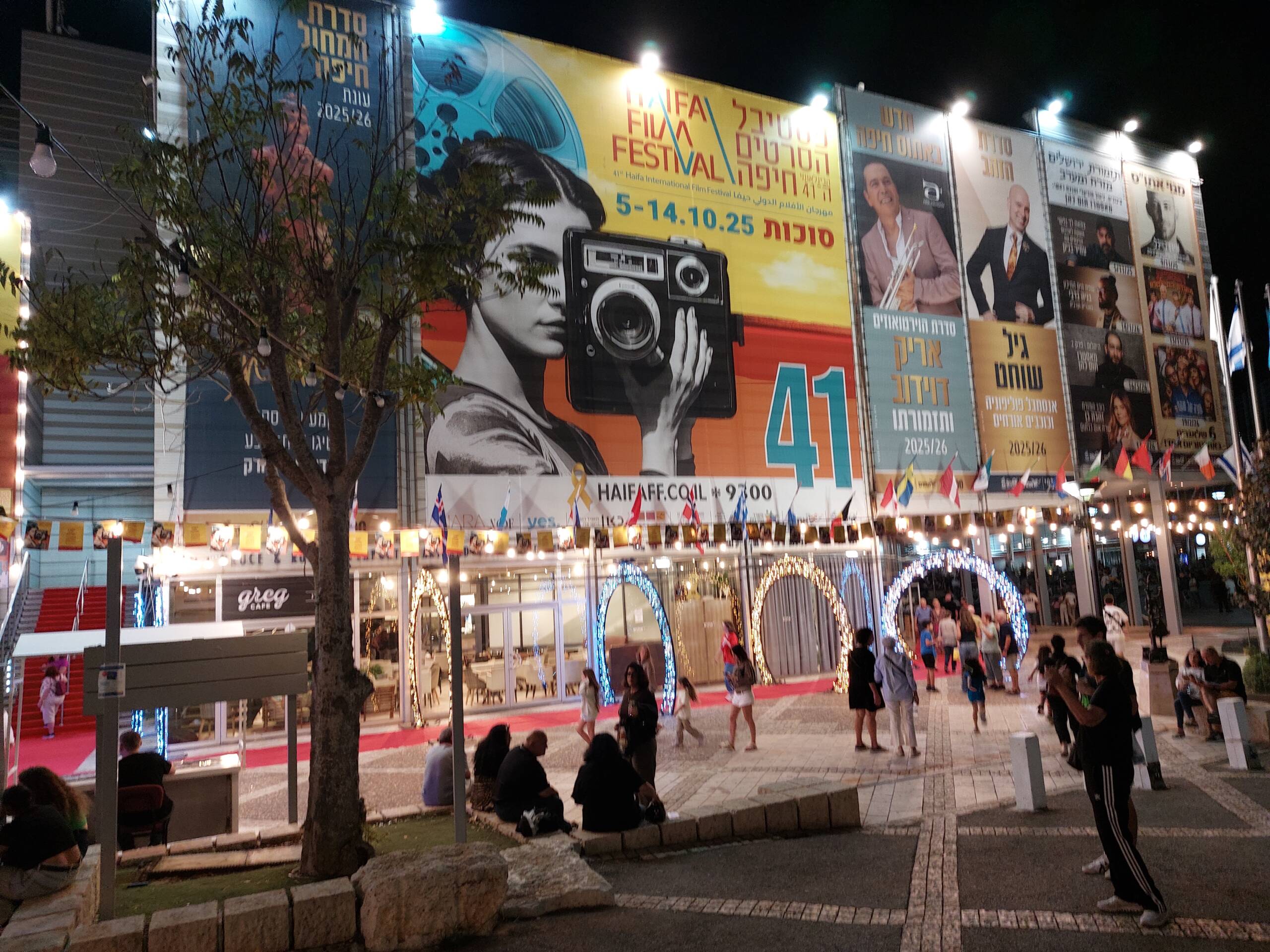The entrance to the 41st Haifa International Film Festival glows under the Mediterranean night sky, banners and lights spilling across the plaza as though the whole city has dressed up for the occasion. The central mural—a woman with a vintage camera pressed to her eye—anchors the façade like an emblem of cinema’s enduring gaze, watching and remembering. This year’s dates, October 5–14, overlap directly with the two-year mark since the October 7 massacre, a tragedy that still hangs heavily over Israel’s collective memory. That timing makes the festival more than just another celebration of cinema; it becomes a public act of resilience, a way of reclaiming joy, culture, and life itself in the shadow of grief.

The scene outside already feels symbolic of that spirit. Families wander in under arches wrapped in lights, flags from around the world flutter above, children chase each other across the square, and people pause on the red carpet for photographs. There’s laughter, chatter, and the kind of casual togetherness that might seem ordinary in another country, but here it carries a sharper edge, as though every moment of normalcy is also a quiet act of defiance. The festival doesn’t pretend to erase what happened—it cannot—but it asserts that art continues, dialogue continues, and the community will not allow itself to be silenced.
Haifa has always had a special role in Israel’s cultural map, a port city open to the world, a meeting place of languages and traditions. With the festival’s screens flickering to life this week, it becomes something more: a reminder that cinema is not just escape but also endurance, a way of sharing stories and reclaiming hope. Two years after horror, the Haifa Film Festival stands like a lit stage in the dark, insisting that Israel is still here, watching, creating, and telling its own story.
Leave a Reply